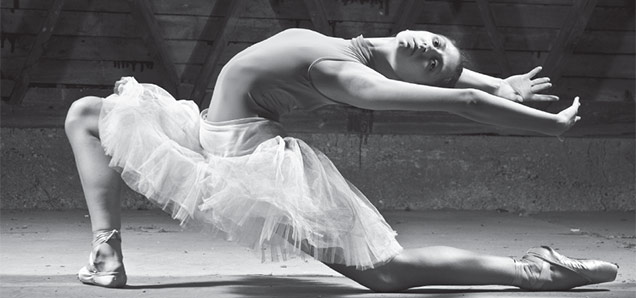Classic romantic ballet recreated in video game form
 CREDIT: NIKOLADESIGN VIA THINKSTOCK
CREDIT: NIKOLADESIGN VIA THINKSTOCKVideo games and classic ballet don't usually go hand-in-hand, but minds at the University of Alberta are making it happen.
EDMONTON (CUP) - The minds and bodies of University of Alberta have teamed up to create an interactive installation on Microsoft Kinect that challenges users to rewrite the tragic romantic story of Giselle through dance poses.
The game, called iGiselle, is one interdisciplinary facet of a larger project, applying a modern lens to romantic era ballets of the 19th century which typically end in the feminine protagonist’s demise.
“For the game, there’s really two aspects of it,” computer science master’s candidate and iGiselle team member Sergio Poo Hernandez said.
“One is what we’re calling PACE (Player Appraisal Controlling Emotion), which is the project that I’m working on for my master’s thesis, which is how to create narratives interactively (and) adapt the narratives to adapt to players’ emotion. Basically, if the author wants the player to experience a certain level of hope or fear at certain points in the story, matching that with the decisions that players are making.”
Nora Stovel, a professor of English and Film Studies who instigated the project, is trained as a professional dancer and says her first love is ballet. Her segue into writing about dance and ballet came naturally, and she’s planning a monograph called “Women with Wings: The Romantic Ballerina.”
But her project really took off after a Faculty Club concert dinner at which she was serendipitously seated with Dr. Vadim Bulitko, a colleague from the Department of Computer Science.
“He was working on video games and the whole idea of narrative branching, interactive narrative, and I thought that was really interesting and I started to think, not for the first time, that it would be interesting to be able to change the endings of these ballets,” Stovel said.
“They’re all tragic. Giselle, for example, (in) Swan Lake the ballerina always dies at the end, and I’ve been tempted to take a sort of feminist approach, ideally allowing the woman – the ballerina – some agency, and that would involve allowing her to stay alive. Vadim was quite interested in that possibility too, in terms of a video game.”
As the story of iGiselle unfolds via music, voiceover and images of dancers against changing backgrounds on screen, the Kinect interface requires players to direct each plot turning point by striking dance poses to select their choice.
Poo Hernandez notes the part of the system that adapts the story to match users’ play styles is inspired by games like the Mass Effect series, and trying to improve upon them.
iGiselle joins a growing number of innovative video games in an industry that primarily markets to men.
“Ballet, I guess, stereotypically, tends to attract a more female or feminine audience,” English and Film Studies PhD candidate and dancer Laura Sydora said. “But we want to be able, too, to sort of appeal across gender divides.”
The setting of the game has been adapted into a meta-ballet – students preparing for a production of Giselle.
“I think with all aspects of the game, from the choreography to the narrative to the music, we want the narrative of Giselle to be familiar and also slightly different,” Sydora said. “We’re sort of contemporizing it for a more modern-day setting, but we don’t want to drastically change the essence of the ballet either.”
Stovel hopes to edit a collection of essays under the working title “Creation of iGiselle,” by project participants, to complement her monograph, and to host a colloquium in October where students and community members may try out the game as an interactive installation.
There’s also talk of maybe releasing iGiselle online, so people can download and play it on their own computer with Kinect game systems.
The project has been supported in part by the University of Alberta Kule Institute for Advanced Study and National Council of Educational Research and Training grants, plus a University of Alberta Killam Small Operating Grant for Stovel to research her monograph, but also offers opportunities to volunteer.
MFA candidate and team member Emilie St. Hilaire said students answered casting calls for voice acting and dancers, and they’re now issuing a call out for general volunteers.
“If people get in touch and want to volunteer, there’s so much basic work right now,” she said.
“Just working with a team is really interesting. It’s a very long-term project – it’s going to be probably a year and a half total – so you get to know everyone and kind of go through all of this together. It’s pretty cool.”
For updates and the full list of project team members, see igiselle.ca.













